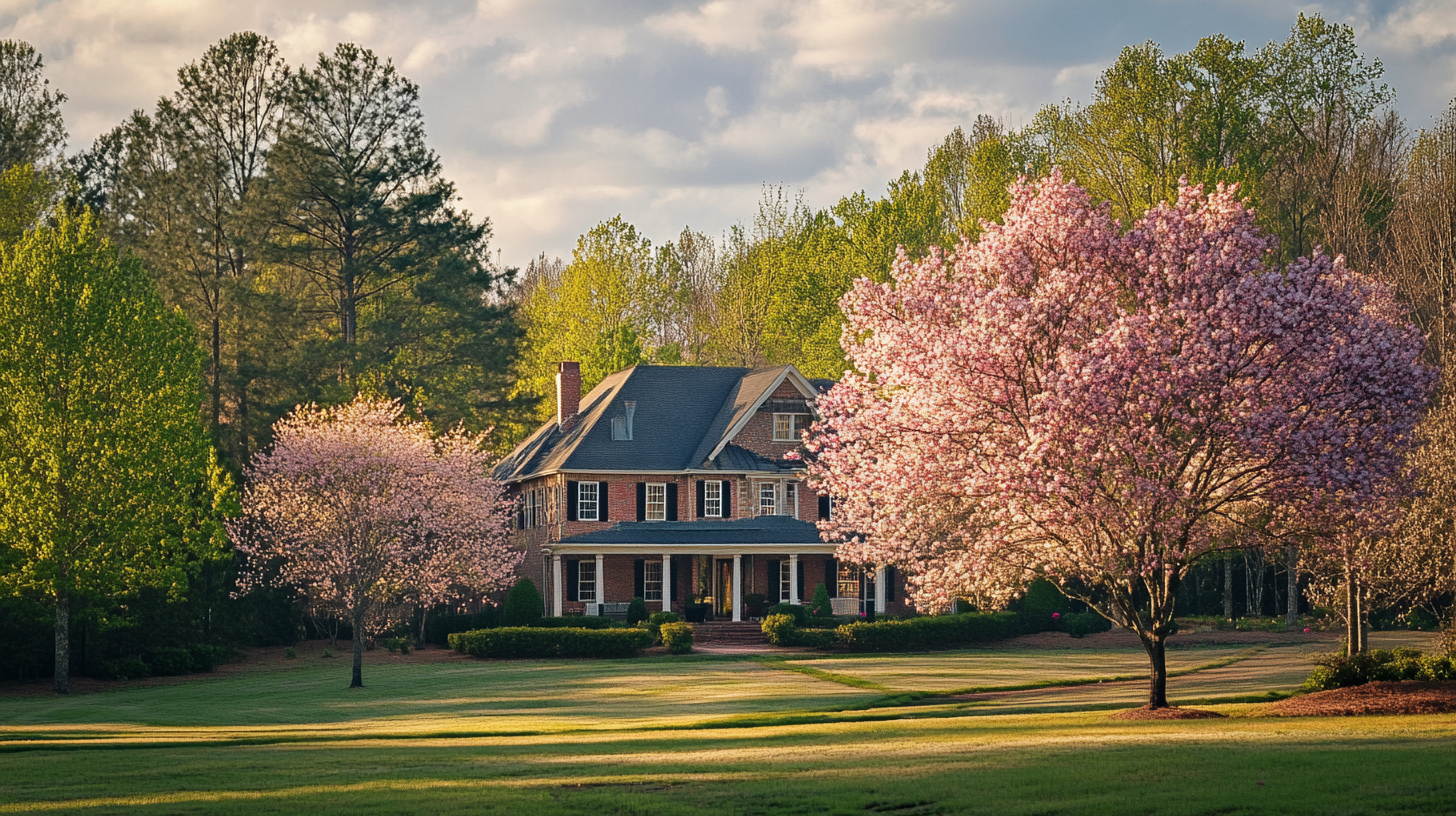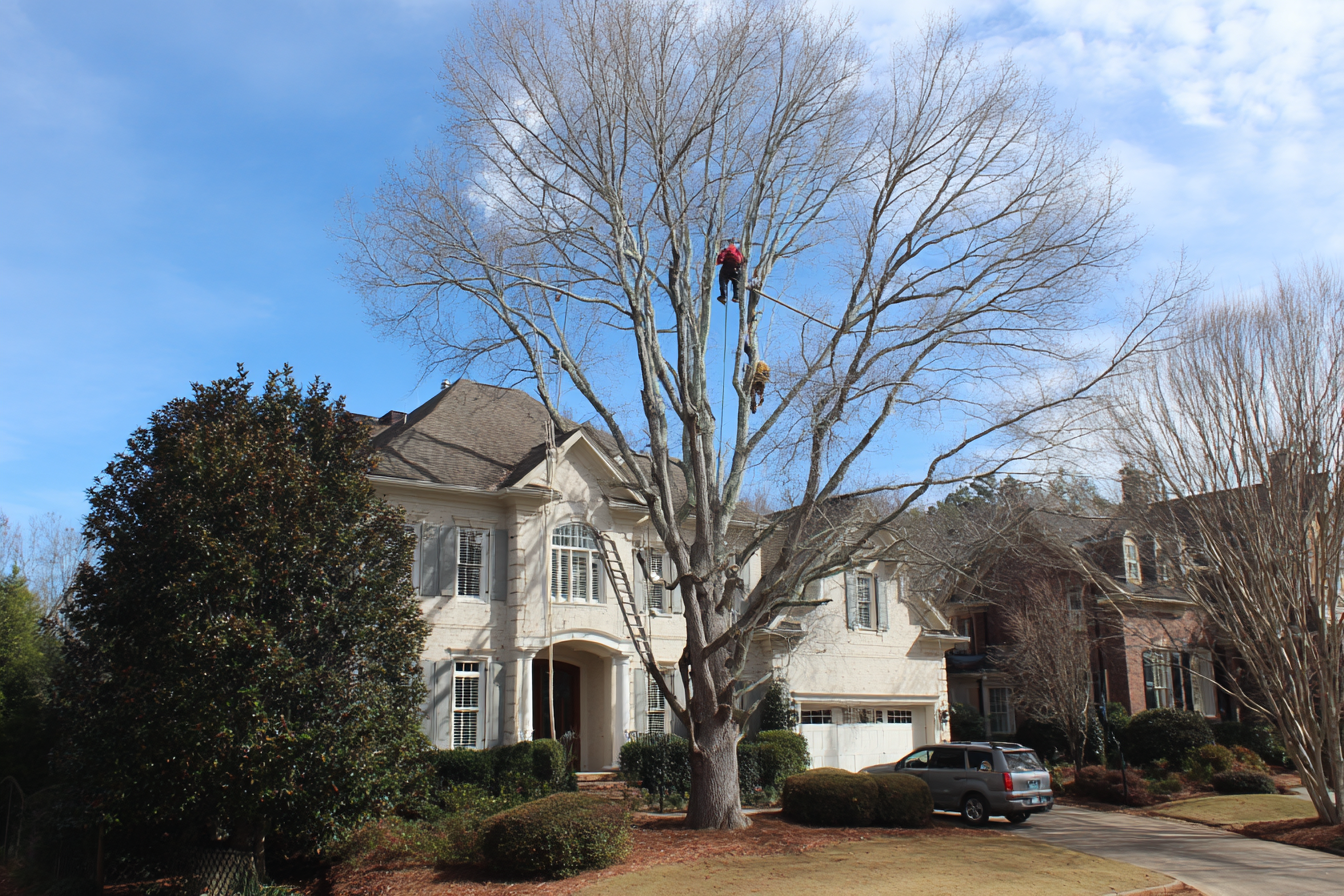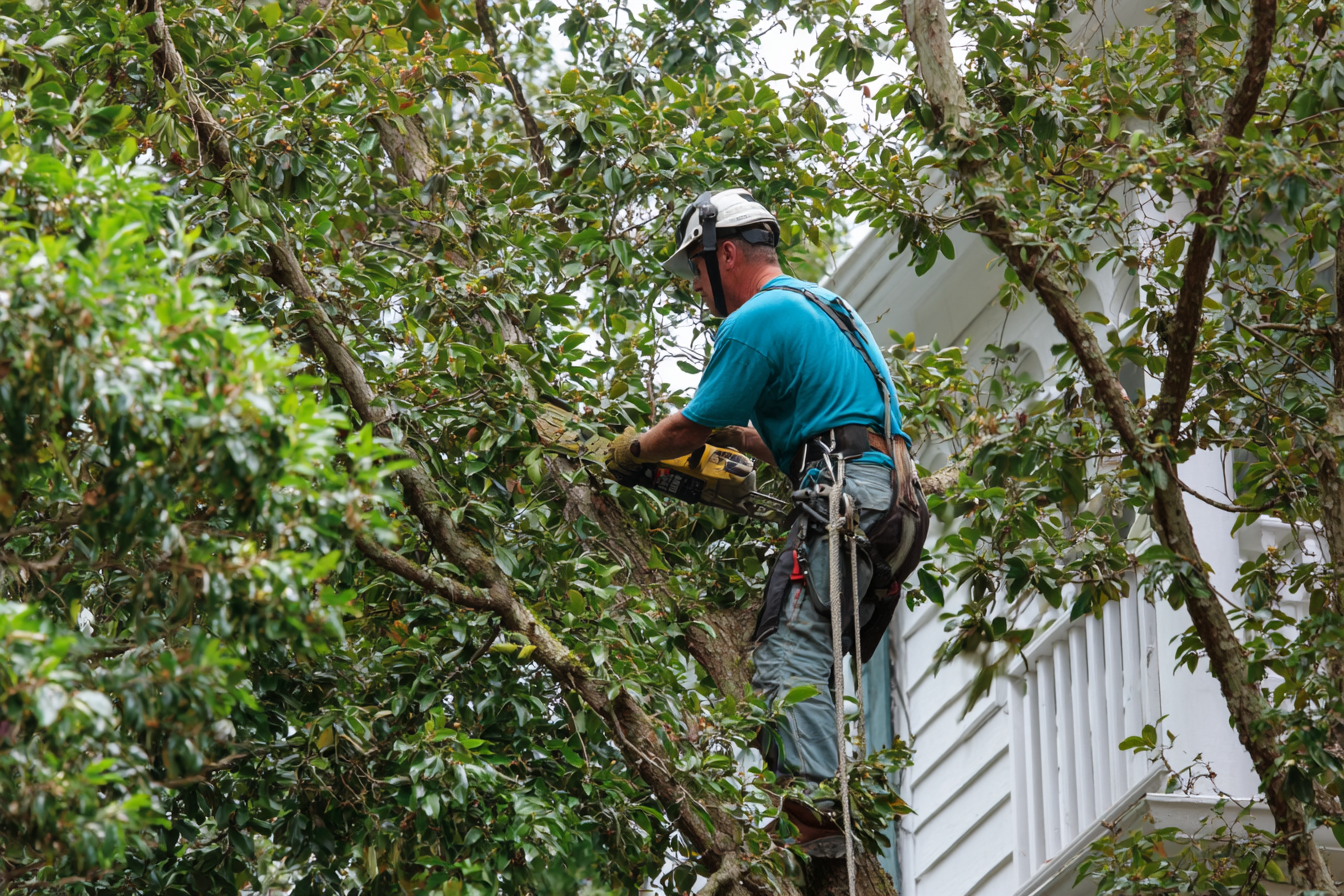Spring & Summer Tree Care Checklist for Georgia Homeowners
Caring for your trees in Georgia during the spring and summer requires attention to detail.

Spring and summer in Georgia are a time of vibrant blooms and lush landscapes, where nature awakens in a symphony of colors and textures. However, this period also demands diligent tree care to ensure your trees remain healthy, resilient, and beautiful throughout the year. Whether you're a seasoned gardener or a novice homeowner, understanding the essentials of tree care during these seasons is crucial for maintaining the vitality of your landscape.
In this comprehensive guide, we'll provide you with a detailed spring and summer tree care checklist tailored specifically for Georgia's unique climate and conditions. With this knowledge, you'll be equipped to nurture your trees effectively, enhancing both their beauty and their contribution to your environment.
Understanding Georgia's Climate
To provide effective tree care, it's essential first to understand the climatic conditions in Georgia. The state is characterized by a humid subtropical climate that features hot, humid summers and mild winters. This means your trees will experience a range of conditions throughout the year, necessitating specific care strategies during the spring and summer months.
The Impact of Humidity
Georgia's high humidity levels can create a breeding ground for fungal diseases and pests. It's essential to choose disease-resistant tree species and maintain proper air circulation through regular pruning. This helps mitigate the risks associated with high humidity.
Temperature Fluctuations
Spring and summer bring significant temperature fluctuations, with cool nights and hot days. These variations can stress trees if not managed properly. Monitoring weather forecasts and adjusting care practices, such as watering and mulching, are vital for ensuring tree health.
Rainfall Patterns
Understanding Georgia's rainfall patterns is crucial for efficient watering practices. The state often experiences heavy spring rains followed by dry summer spells. This makes it essential to implement strategies that optimize water retention, like mulching and deep watering techniques.

Spring Tree Care
Spring is a time of renewal and growth, where the awakening of nature is vividly evident. As the weather warms up, your trees will start to come back to life. Here's how you can help them thrive during this critical period:
Inspect for Winter Damage
After the winter months, it's crucial to inspect your trees for any signs of damage caused by cold temperatures or storms. Look for broken branches, cracks, or splits in the bark. Addressing these issues early can prevent further damage.
Identifying Common Damage
Winter can be harsh on trees, leading to broken branches and damaged bark. Conduct a thorough inspection, paying special attention to the tree's structure and any signs of stress or injury.
Steps for Repair
Once damage is identified, take immediate steps to repair it. Prune broken branches and apply wound dressing if necessary. This prevents the entry of pests and diseases through open wounds.
Preventive Measures
Implement preventive measures to minimize winter damage in the future, such as applying protective wraps to young trees and ensuring proper mulching before winter arrives.
Pruning
Pruning is essential in spring to remove dead or diseased branches, which can harbor pests and diseases. Focus on trimming back overgrown branches to improve air circulation and sunlight penetration.
Best Practices for Pruning
Understand the best practices for pruning, including the right tools to use and the best time of day to prune. This ensures minimal stress on the tree and promotes healthy growth.
Encouraging New Growth
Strategic pruning encourages new growth and enhances the tree's natural shape. Identify areas where selective pruning can promote a fuller canopy and healthier branches.
Avoiding Common Mistakes
Avoid common pruning mistakes, such as topping or over-pruning, which can harm the tree. Educate yourself on the correct techniques to ensure beneficial results.
Mulching
Applying a layer of organic mulch around the base of your trees helps retain moisture, regulate soil temperature, and suppress weeds. Make sure to keep the mulch away from the tree trunk to prevent rot.
Types of Mulch
Explore the different types of mulch available, such as wood chips, straw, and bark, and understand their benefits. Choose the best option based on your tree species and landscape aesthetics.
Proper Mulch Application
Learn the proper method of applying mulch to maximize its benefits. This includes the ideal depth and coverage area to protect the tree's root zone effectively.
Seasonal Mulch Maintenance
Regularly check and renew the mulch layer throughout the spring and summer to maintain its effectiveness. This is particularly important during dry spells to conserve soil moisture.
Fertilization
Spring is an ideal time to fertilize your trees. Use a balanced, slow-release fertilizer to provide essential nutrients that support healthy growth. Be sure to follow the manufacturer's instructions for application rates.
Choosing the Right Fertilizer
Understand the nutrient requirements of your tree species and select a fertilizer that meets these needs. Consider conducting a soil test to tailor your fertilization approach.
Timing and Application
Apply fertilizer at the right time to maximize its benefits. Learn the best techniques for even distribution and proper absorption by the tree roots.
Monitoring Results
Monitor the tree's response to fertilization, looking for signs of improved growth and vitality. Adjust your approach as needed to ensure ongoing tree health.
Pest and Disease Management
As temperatures rise, pests and diseases become more active. Regularly inspect your trees for signs of infestations or disease symptoms such as discolored leaves or unusual growths. Early detection and treatment are key to preventing severe damage.
Identifying Common Pests
Familiarize yourself with common pests in Georgia, such as aphids and caterpillars, and their signs of infestation. Early identification is crucial for effective management.
Natural Pest Control Methods
Explore natural pest control methods, such as introducing beneficial insects and using organic sprays. These approaches minimize harm to the environment and promote biodiversity.
Disease Prevention Strategies
Implement disease prevention strategies by maintaining tree health through proper care practices. This includes ensuring adequate air circulation, proper watering, and regular pruning.

Summer Tree Care
Summer in Georgia can be hot and dry, presenting unique challenges for tree care. Here's how to keep your trees healthy during the summer months:
Watering
Proper watering is critical in the summer to help trees cope with heat stress. Water deeply and infrequently to encourage deep root growth. Early morning or late evening watering reduces evaporation and ensures maximum absorption.
Deep Watering Techniques
Learn the techniques of deep watering to ensure water reaches the tree's root zone. This helps establish a robust root system that can withstand drought conditions.
Efficient Water Use
Implement strategies for efficient water use, such as drip irrigation systems and rainwater harvesting. These methods conserve water while ensuring trees receive the hydration they need.
Signs of Underwatering
Recognize signs of underwatering, such as wilting and leaf drop, and adjust your watering practices accordingly to prevent stress and damage.
Monitoring for Heat Stress
Signs of heat stress include wilting, leaf scorch, and premature leaf drop. If you notice these symptoms, increase watering frequency and consider using shade cloths for young or vulnerable trees.
Identifying Vulnerable Trees
Identify trees most susceptible to heat stress, such as young or newly planted trees. Prioritize these trees for additional care and protection during hot spells.
Implementing Shade Solutions
Explore shade solutions like cloths and temporary structures to protect vulnerable trees from intense sunlight. These measures can significantly reduce heat stress.
Adjusting Care Practices
Adjust your care practices based on the tree's response to heat. This includes modifying watering schedules and increasing mulch layers to retain soil moisture.
Pest Control
Summer is prime time for pests like aphids, caterpillars, and borers. Keep a watchful eye on your trees and apply organic pest control methods if needed. Introducing beneficial insects like ladybugs can help control pest populations naturally.
Monitoring Pest Activity
Regularly monitor your trees for signs of pest activity. Early detection is crucial for effective control and minimizing damage.
Biological Control Methods
Utilize biological control methods, such as introducing natural predators, to manage pest populations sustainably. This approach reduces reliance on chemical pesticides.
Integrated Pest Management
Adopt an integrated pest management approach that combines cultural, biological, and mechanical methods for comprehensive pest control while minimizing environmental impact.
Disease Prevention
Fungal diseases thrive in Georgia's humid summer climate. Ensure proper air circulation by pruning dense foliage and removing fallen leaves. If necessary, apply fungicides according to label instructions.
Recognizing Fungal Diseases
Learn to recognize common fungal diseases, such as powdery mildew and root rot, and their symptoms. Early identification allows for timely intervention.
Cultural Practices for Prevention
Implement cultural practices that prevent disease spread, such as proper spacing and sanitation measures. These steps reduce disease pressure and promote tree health.
When to Use Fungicides
Understand when the use of fungicides is necessary and follow label instructions carefully. This ensures effective disease control without harming beneficial organisms.
Protecting Young Trees
Young trees are particularly vulnerable to heat and drought. Consider using tree shelters or wraps to protect them from harsh sunlight and wind. Regularly check their moisture levels and adjust watering as needed.
Tree Shelters and Wraps
Explore the benefits of tree shelters and wraps in protecting young trees. These tools provide a controlled environment that supports growth and development.
Monitoring Growth Progress
Regularly monitor the growth progress of young trees, assessing their response to care practices. This ensures timely interventions and adjustments.
Tailoring Care for Young Trees
Tailor your care practices to meet the specific needs of young trees, such as increased watering and nutrient support, to promote robust growth.

Additional Tips for Tree Care in Georgia
In addition to seasonal care practices, there are several other strategies you can implement to maintain the health and beauty of your trees year-round:
Soil Testing
Conducting a soil test can provide valuable insights into your soil's nutrient levels and pH. This information allows you to tailor your fertilization and soil amendment practices to meet your trees' specific needs.
Benefits of Soil Testing
Understand the benefits of soil testing, such as improved plant health and optimized nutrient management. This proactive approach enhances tree vitality.
Interpreting Test Results
Learn how to interpret soil test results and adjust your care practices accordingly. This ensures your trees receive the nutrients they need for optimal growth.
Regular Testing Schedule
Establish a regular soil testing schedule to monitor changes in soil composition and adjust your management strategies as needed.
Mulch Renewal
Renewing your mulch layer in summer helps maintain soil moisture and temperature. This is particularly important during dry spells when trees are more susceptible to stress.
Timing for Mulch Renewal
Determine the ideal timing for mulch renewal to maximize its benefits. This often aligns with seasonal transitions and changes in weather patterns.
Mulch Types and Benefits
Explore different mulch types and their specific benefits, considering factors like appearance, decomposition rate, and nutrient contribution.
Addressing Mulch Issues
Address common mulch issues, such as compaction and fungal growth, to maintain its effectiveness and prevent potential problems.
Regular Maintenance
Regular maintenance is key to preventing issues before they become major problems. Schedule routine inspections and address any concerns promptly.
Creating a Maintenance Schedule
Create a comprehensive maintenance schedule that outlines regular tasks and inspections. This proactive approach ensures timely interventions.
Spotting Potential Problems
Learn to spot potential problems early, such as signs of pest infestations or disease symptoms, and take swift action to address them.
Documenting Tree Health
Keep detailed records of your tree care practices and observations. This documentation helps track tree health over time and informs future care decisions.
Consulting Arborists
For complex tree care issues or large trees that require professional attention, consider consulting a certified arborist. They can provide expert advice and services to ensure your trees remain healthy and safe.
When to Seek Professional Help
Recognize situations where professional help is necessary, such as severe storm damage or complex pest issues. This ensures effective and safe interventions.
Choosing the Right Arborist
Learn how to choose a qualified arborist, considering factors like certifications, experience, and reputation. This ensures reliable and expert care for your trees.
Collaborating with Arborists
Collaborate with arborists to develop a comprehensive care plan tailored to your landscape's unique needs. This partnership enhances tree health and longevity.
Conclusion
Caring for your trees in Georgia during the spring and summer requires attention to detail and a proactive approach. By following this comprehensive checklist, you'll be well-equipped to nurture your trees and enjoy a beautiful, thriving landscape. Remember, healthy trees not only enhance your property's aesthetic appeal but also contribute to a healthier environment. With the right care, your trees can provide shade, beauty, and tranquility for years to come.
Implement these strategies, and watch your Georgia garden flourish! With consistent care and attention, you'll create a vibrant outdoor space that reflects the natural beauty of Georgia's landscape.
Contact Georgia Pro Tree Services
For expert assistance in maintaining the health and beauty of your trees, reach out to Georgia Pro Tree Services today! Our certified arborists are ready to provide tailored care solutions to meet your landscape's unique needs. Don't wait until problems arise—contact us now to ensure your trees thrive in Georgia's climate!
Contact us today to schedule a consultation and take the first step towards a healthier, more vibrant outdoor space!

We're your local tree pros!
Georgia Pro Tree Services takes the highest quality of care when servicing your trees. Call us to find out how we can help you keep your yard in top shape.



